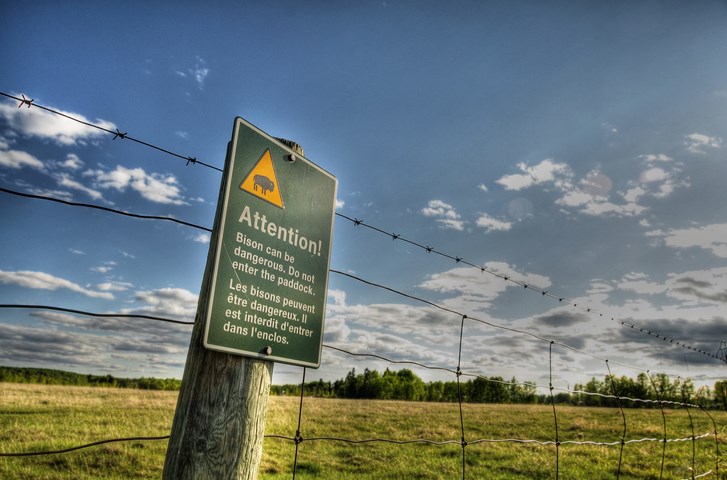Last year, about 5,800 bison were slaughtered at federally inspected plants in Canada.
Bison slaughter in 2021 is on track to exceed that figure, but some producers are worried about a large number of bison going to market this fall because Western Canada may not have the slaughter capacity to deal with an influx of bison and domestic demand may not be large enough to consume the additional bison meat.
“Personally, we’re looking at reducing (our herd) by 30 percent. Some guys are going more,” said Les Kroeger, who raises bison near Hanley, Sask., and is president of the Canadian Bison Association. “So, we’re going to see a lot of cull cows hitting the market. Where are they going to go? Do we have slaughter capacity and a market for that trim (ground bison) product?”
Western Canada, due to the drought that reduced hay production and pasture growth this summer.
Based on the most recent data, about 4,000 bison have been processed at federally inspected plants in 2021. But this fall, there could be a situation where bison don’t go to market because packing plants can’t handle the volume of animals.
“It (bison meat) either has to sit in a freezer, or not get slaughtered,” Kroeger said.
If the bison don’t get slaughtered, producers will have to retain those animals. That’s a problem, as many ranchers don’t have enough feed to get through the winter.
Some bison producers will need help to find feed to get their animals through winter. Or they might need a government program, where bison meat is bought and donated to food banks.
Looking beyond the problems associated with the drought of 2021, some bison producers are worried about slaughter capacity in Canada.
The number of bison slaughtered in Canada has been sliding downward since the late 2000s, when federally inspected plants processed about 18,000 per year. The 5,800 slaughtered in 2020 was the lowest number in two decades.
To increase those figures, the bison sector is putting more emphasis “on building domestic markets and domestic slaughter capacity,” Kroeger said.
The shift toward the Canadian market is somewhat related to the pandemic.
Coronavirus causes shift
COVID has changed buying habits, as some consumers have experimented with new recipes and new foods, including bison.
To satisfy the interest in bison, Costco, Sobey’s and other grocers routinely stock bison in the meat section.
“If you look at the marketplace… consumers in Canada have probably got more access to bison than they ever had in the past, fresh and frozen product,” said Terry Kremeniuk, executive director of the Canadian Bison Association.
That’s positive, but no one really understands the potential of bison in the Canadian market. That’s why the Canadian Bison Association is working on a feasibility study to evaluate domestic demand and whether additional slaughter makes sense.
Some questions the study hopes to answer:
- Are there enough animals?
- Is the Canadian market big enough?
- How big a slaughter plant is needed?
- Will the plant process bison and beef cattle?
“Until we get some data on paper, they’re just questions,” Kroeger said
While bison slaughter in Canada has declined, American packers are processing more bison. Federally inspected bison slaughter increased by 7,000 head and hit 63,000 in 2020, the highest amount on record.
Live bison exports from Canada to the U.S. increased 20 percent in 2020 — reaching about 24,000 head.
That market shift, toward more slaughter in the U.S., has created a two-tier price structure. Ranchers who have business relationships with export bison to the U.S. receive about $5 per pound for their animals. But farmers in Canada who sell into the Canadian market receive about a $1 less per pound.
If the feasibility study suggests that more bison processing makes sense in Canada, and the industry can attract investors in a packing plant, the price gap between U.S. and Canadian bison prices could shrink.
The feasibility study is expected to be done before the end of 2021.






